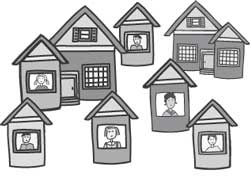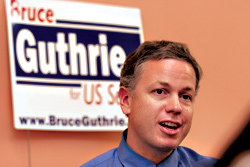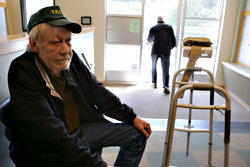Over the past two decades, according to census data, Seattle has become more a city of singles, as families have loaded their U-Hauls and pointed their Subarus toward the suburbs. Need proof? Two out of every five households in this town consist of a single person. Nationally, we rank only behind Washington, D.C., in this regard. Think about it: We’re actually ahead of Manhattan for once! And the trend is projected to continue, partly because of broad demographic shifts in American society (e.g., the post-baby boom generations are marrying later, having kids later, and often blowing off the marriage-and-kids thing altogether).
At the same time, singlesespecially those in the so-called creative classare moving here, bust or no bust. A report from the U.S. Census Bureau this month estimates that 17,554 college-educated singles ages 25 to 39 moved to Seattle between 1995 and 2000. Then there are additional single-person households created by divorce, death, and other changes in family status. The net effect is that between 1980 and 2000, Seattle’s single-person households went from 38 percent of total households to 41 percent.
So here’s the problem: We’ve got to put all these singles somewhere within the city’s boundaries, but Seattle’s housing stock is out of sync with demographic trends. We remain largely a city of single-family homes (51 percent of the city is zoned for single-family use). And the chance of an average single person being able to afford a three-bedroom Craftsman in Ravenna? Zip. Hence the need for more “multifamily” options (which really means more multi-single-person-household options), i.e., the decidedly unsexy and thankless task of changing zoning codes, which the city is just beginning to do. As always, the opponents’ script is classic NIMBY-ism: “Our way of life and property values are being threatened!” The horror of density is invoked, that we should become more like San Francisco or Boston.
IT’S NOT LIKE WE should be surprised by how this phenomenon is unfolding. Former Mayor Paul Schell’s 1998 housing summit was, in part, designed to address how the city would handle the 51,000 new households targeted by the Department of Planning and Development (DPD) for Seattle by 2025 and what the housing mix should look like. The city still needs about 2,000 new households a year over the next two decades to meet the anticipated demand.
Well, no one’s building units for singletons. Condominium developers are running away from multifamily projects due to exploding liability-insurance costs and leaky-condo lawsuits by residents, as The Seattle Times reported earlier this month.
Meanwhile, the city’s been trying to encourage accessory dwelling units (ADUs) and detached accessory dwelling units (DADUs, aka mother-in-law cottages) within single-family zoning areas. Though ideal for singles of any age, the DPD doesn’t think they address more than 5 percent of the current need. DPD spokesperson Alan Justad concedes that only 1,000 DADUs and ADUs have been built over the last 10 years. And, predictably, neighborhood associations hate the prospect of DADUs on their block.
That’s stupid, because, speaking from personal experience, I can tell you that the mother-in-law unit is not the worst housing idea in the world. I lived in one for five years in San Diego for $500 a month (!) with a view of the Pacific Ocean. I loved the quiet single-family neighborhood, and I was a good neighbor. Nobody ever complained about me, my car, my cat, or my stereo.
UNLOVED BY THE Wallingford Community Council, unable to afford a Belltown high-rise condo, what’s a poor single to do? Watch the political sausage-making machine at work, of course. Zoning changes will come before the (new) City Council next year. Who knowsmaybe newly elected council member Jean Godden has a soft spot for singles? Or, if cowed by the power of neighborhood associations, the council may continue to ignore demographic realitythat we singles, no matter what age, cannot all live as renters on Capitol Hill for the rest of our lives.
To those living in the single-family pleasure domes of Wallingford and Ravenna (or Beacon Hill or West Seattle), I have a message: Face reality. The day of reckoning is nigh; just check Census 2000 to see how the numbers are changing. We’re gaining on you. All wewell, some of uswant is a decent roof over our heads in a nice, tree-filled neighborhood instead of the apartment hell many of us are consigned to now. Don’t force us to get nasty and change your zoning to high-rise and make a Belltown of your burb.








